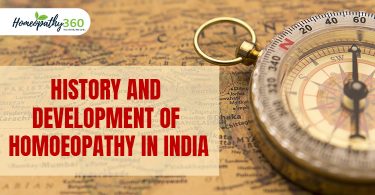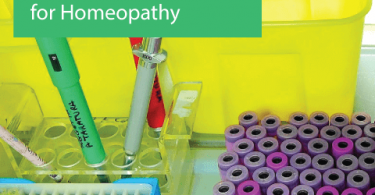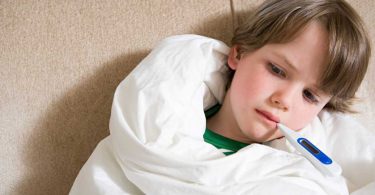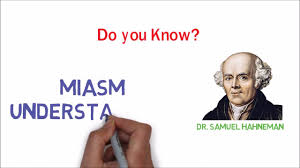
Introduction:- Concepts and principle were tried to be applied based on the prevailing understanding. This resulted in widespread diverse view which became the base for different systems of medicine. Hypothetical medicine leads the path for origin of medical school.
Review of pre-Historic literatures: Entire history of Pharmacy revolves around the materialistic view only as such its development in all regions of the world remained limited to the material substances. Paleo-pharmacological studies attest to the use of medicinal plants in pre-history.
Apothecary to homoeopathic pharmacy:-History of medicine has remained a very fascinating subject as it has developed from plausibility to confirmatory approach passing through the myths, accidental learning and various doctrines tried to be applied in it. Preparation and dispensing aspects remained subject following the thematic principles involved in the nature of medicines principle followed. From apothecary to the present state pharmacy has been variedly branched into different stream.
Aspects related to homoeopathic principle in pharmaceutical process: Applied aspects of pharmaceutical understanding for Homoeopathy one has to ponder over the realities involved in Homoeopathic Principles. Nature of life at the Vital Principle with concept of disease dynamic pattern exhibited through miasma and remedial measure following the law of similar requires underrating on the dilution nature and material substance involved in them.
Futuristic approach: Homoeopathy uses a specific terminology that is not always used in a consistent way in the monographs and current editions of pharmacopoeias in official use. It is necessary to define key terms unambiguously for quality control recommendations. These definitions have to be considerable consensus, and broad enough to encompass homoeopathic medicines made and used according to well-established variations to the original philosophy of Hahnemann.
INTRODUCTION
History through development of civilization suggests that problems related as disease has been tried to be solved by finding out the remedial measure. Tracing history for evolution of disease and medicine run parallel to each others. Our information about medicine and diseases accumulated from diverse sources throughout the globe. Concepts and principle were tried to be applied based on the prevailing understanding. This resulted in widespread diverse view which became the base for different systems of medicine. Hypothetical medicine leads the path for origin of medical school1.
Development of medical system has their origin in demonic way which later on transcendent to the material level specially in the plants kingdom. We observe apothecary process has beginning in both spiritual process as well as materials processing method in very raw way. Earlier apothecary process involved many spiritual rituals performed while medicinal substances were processed in most of the Indian, Arabic and even the Greek medicine. Even the administration process to the patient finds such rituals being followed and proper such instructions were given to the patient. With more proving evidence reCeived these spiritual ritual are vanishing from the pharmaceutical process. Pharmacists of a certain age are well acquainted with the cultivation, preparation, action and uses of crude drugs learned in the traditional way1.
REVIEW ON PRE HOMOEOPATHIC PHARMACY
Entire history of Pharmacy revolves around the materialistic view only as such its development in all regions of the world remained limited to the material substances. Paleo-pharmacological studies attest to the use of medicinal plants in pre-history2.
Ayurvedic development: The earliest known compilation of medicinal substances was the Sushruta Samhita, an Indian ayurvedic literature by Sushruta in the 6th century BC to provide information on the use and preparation of herbal medicine. However, the earliest text as preserved dates to the 3rd or 4th century AD.
Sumerian development: Many Sumerian (late 6th millennium BC – early 2nd millennium BC) cuneiform clay tablets record prescriptions for medicine.
Egyptian Development: Ancient egyptian pharmacological knowledge was recorded in various papyri such as the Ebers Papyrus of 1550 BC, and the Edwin Smith Papyrus of the 16th century BC.
Chinese’s Development; the earliest known Chinese manual on materia medica is the Shennong Bencao Jing (the divine farmer’s herb-root classic), dating back to the 1st century AD. Chinese concept was a movement towards the dynamism as they had thoughts on the life principle of yin and yang concept. Yet pharmacy remains limited to material stage.
Greek development: The Greek physician, Pedanius Discords is famous for writing a five volume book in his native Greek in the 1st century AD. The Latin translation of “De Materia Medica” (concerning medical substances) was used as a basis for many medieval texts, and was built upon by many middle eastern scientists during the Islamic Golden Age. The title coined the term ‘materia medica’.
Japanese development: The place of pharmacists in society was expressly defined in the Taiho Code (701) and re-stated in the Yoro Code (718). Ranked positions in the pre-Heian imperial court were established; and this organizational structure remained largely intact until the Meiji Restoration (1868). In this highly stable hierarchy, the pharmacists — and even pharmacist assistants — were assigned status superior to all others in health-related fields such as physicians and acupuncturists. In the Imperial household, the pharmacist was even ranked above the two personal physicians of the Emperor.
Islamic development: During the golden era of Islam around 754B.C. first pharmaceutical system was introduced. By the 9th century, these pharmacies became state-regulated. The advances in made in the Middle East in botany and chemistry led medicine in medieval Islam substantially to develop pharmacology.
EMERGENCE OF HAHNEMANN’S HOMOEOPATHY7
Hahnemann’s theories is certainly possible to accommodate the hypothesis of ‘like treats like’ as an empirically established approach to treatment. Modern practitioners would be brave indeed if they adopted a narrow, blinkered view of any condition presented by any patient, and this is underlined by the fact that government agencies and health insurers throughout the world are now increasingly demanding defined quality of outcome for all the treatments for which they pay. In doing so, these agencies are seeking a cost-efficient way of attaining the World Health Organization definition of health which Steven quotes later but which bears repetition here. In spite of Hahnemann’s dislike for the apothecaries of his time, it is understandable that some pharmacists now take an active interest in homoeopathy. This has been an area of expertise of the apothecary since antiquity when materials were drawn from all over the Old World, many of them travelling along the spice road from the east2.
APOTHECARY TO HOMOEOPATHIC PHARMACY
History of medicine has remained a very fascinating subject as it has developed from plausibility to confirmatory approach passing through the myths, accidental learning and various doctrines tried to be applied in it. Preparation and dispensing aspects remained subject following the thematic principles involved in the nature of medicines principle followed. From apothecary to the present state pharmacy has been variedly branched into different stream. The word ‘pharmacist’ was first used in a publication in England in 1834 according to the oxford english dictionary in a novel by Lytton called The Last Days of Pompeii. However, it was certainly in use from the 18th century with the meaning of someone who prepared and dispensed medicines. The terms pharmacist and pharmaceutical chemist came later in the 1800s3.
- Prehistoric development: Development of medicine remained parallels to man’s civilization. Ancient man learned from instinct, from observation of birds, animals, other creature and natural phenomenon in existence. Application of substances available such as hot or cold water, different parts of plants, minerals constituted first medicinal applications. It is trial and error method functioning when things were tried to be used to get relief.
- Diseases in duality: Initial insight into the diseases came out of the helplessness state of desperate mind seeking solace from the God and diseased state as divine punishment. Offences were recognised as causation and remedial major as the prayer and offerings to the God through the priest as representative. Magic and sacrifices were employed as medicine and the priest as expert. It can be understood that these demonic features only constituted as initial apothecary procedure. With accumulation of information and development of organization understanding in medicines and nature of disease brought changes in concept of disease and healing procedure. Power of God and priest started declining and emphasis moved towards the natural surroundings.
- Humanity linkage with environment: Upcoming of Hippocrates in around 420 BC medicines information started becoming more précised. It was tried to search for link between environment and human beings. Life were tried to be related with elements available in the universal phenomenon. Concepts related to physiological features of discharges and structures were tried to be proved rationally.
- Botany and its developmental stages: In about 300 BC plant kingdom became the centre of attraction to find out the remedial agent from plants. Theophrastus regarded as father of botany along with others contributed information leading to systemic studies of plants and their classification. Medicinal properties were explored and tried to be documented, Observations and writings dealing with the medical qualities and peculiarities of herbs are unusually accurate, even in the light of present knowledge4.
- Approach towards research and scientific understanding: With more information coming from botanical kingdom material medica were started to be developed. Searching and making notes on observation constituted the medicinal properties. Researcher wandered throughout the world in search of medicinal substances. Discords texts were considered basic science as late asthe sixteenth century.Galen (130- 200 A.D.) practiced and taught both Pharmacy and Medicine in Rome; his principles of preparing and compounding medicines ruled in the Western world for 1,500 years; and his name still is associated with that class of pharmaceuticals compounded by mechanical means known as galenicals. His pharmaceutical teachings were accepted as authority in the West until the 17th century; and still are dominant influences in the Orient.
- Doctrine of signature: Paracelsus – advocated chemically prepared drugsfrom crude plant and mineral substances. He preached the ‘Doctrine of signature’, a belief that God had placed a sign on healing substances indicating their use against disease. He sparked the growth of modern pharmaceutical sciences.
- Miracle medicines: Man was either taken as a machine or a laboratory test tube. The whole living man was entirely ignored during 17th century. Thomas Sydenham impressed upon medical profession the necessity of discovering specifics for diseases. Sydenham was eclipsed by emergence of innumerable theorists and speculators in the field of medicine. Practically, the whole of Europe was marked by a plethora of theories and hypotheses.
- Lack of principles– Innumerable and dissimilar ideas respecting the nature of diseases and their remedies sprang from so many dissimilar brains and the theoretical views these gave rise to the so-called systems, each of which was at variance with the rest and self-contradictory. Hence, started the ‘mixture‘prescriptions, blood-letting and other crude and torturoustherapeutic practices. There was chaos with total absence of any general or fixed principles or laws of treatment.
ASPECTS RELATED TO HOMOEOPATHIC PRINCIPLE IN PHARMACEUTICAL PROCESS
Hahnemann combined himself a physician, a pharmacologist and pharmacist in himself. In fact he was his own discoverer in every field of medicine. Besides being a discoverer of a new system of therapy he may justifiably be styled as “father of experimental pharmacology” as he was the first to ascertain the positive effect of drug on healthy human being. Homoeopathy was born when Hahnemann started his revolutionary career in the field of therapeutics with the publication of 1796 of an article of Hufeland’s journal under the title, “Essay on anew principle for ascertaining the curative power of drugs”. He started as a pharmacologist and a therapeutics and ended as a discoverer of complete system of medicine comprising its science portion and art portion as well5.
The very thoughts of dynamic medicine brought into existence, the subject of potentising the medicinal substance and enhancing the dynamic properties in the medicine. Thus Homoeopathic thought about preparation of medicine is quite opposite to the nature of medicines to be prepared for the material concept of disease. Diminishing the material property and increasing the dynamic property becomes the basis for homoeopathic pharmacy.
Both the material substratum as well as dynamic energized property needs to be separated to retain the natural principles. Homoeopathic principle applied to the subject of pharmacy relates to extracting the dynamic property from the material substratum. Thus we may divide the whole of the pharmacy subject for homoeopathy into two stages5:
- Pre-homoeopathic stage: It is the stage where we collect the medicinal substance from nature, processing for finding out the medicinal property. This stage is similar as with of the other system of medicine. Up to preparation of mother tincture, more or less pharmaceutical remain the same with little variation3.
- Homoeopathic stage- Extracting out the dynamic property from the material. This stage is the Determinative stage for the homoeopathic pharmacy. Application onward makes the subject very specific for homoeopathy. Potentising the medicine and beyond mother tincture pharmaceutical process become more specific and exclusive for the Homoeopathy.
FUTURISTIC APPROACH
It is paramount that pharmacists and technicians understand the regulation of homoeopathic medications. Not only is this area of confusion leading to widespread misinformation, it is an area of rapid change. Pharmacists are dedicated to providing accurate drug-related information and, in this capacity, should combat the misconception among the public and other health care professionals that homoeopathic medicines are not regulated. Funding for researches is required and proper planning to conduct effective randomized controlled trials that respect the homoeopathic treatment context6.
REFERENCES:
- Steven BK, Homoeopathic Pharmacy- Theory & Practice,Second Edition Elsevier Limited, ISSN 0 443 101604
- WHO Safety issues in the preparation of homoeopathic medicines ISBN 978 92 4 159884 2[Last accessed on 2018 Sep 12]
- Sahani. M.K. Principle and Practice of Homoeopathy, First Edition, B. Jain Publishers, New Delhi
- Sahani. M.K., Approach to Pharmacy in Homoeopathy, Homoeopathy 360, https://homoeopathy360.com/category/articles/
- Datta S, Mallick P, Khuda-Bukhsh AR. Efficacy of a potenized homoeopathic drug in reducing genotoxic effects produced by arsenic trioxide in mice: 2. Comparative efficacy of an antibiotic, actinomycin D alone and in combination with either of two microdoses. Complement Ther Med. 1999; 7:156–63. [PubMed][Last accessed on 2018 Sep 12]
- Reilly DT, Taylor MA, McSharry C, Aitchinson TC. Is homoeopathy a placebo response? Controlled trial of homoeopathic potency, with pollen in hayfever as a model. Lancet. 1986; 328:881–6. [PubMed][Last accessed on 2018 Sep 12]
- LMHI. Scientific Framework of Homoeopathy. Available from: http:// www.lmhi.org/article/detail/42. [Last accessed on 2018 Sep 12]
About Author:
Dr Kumar Ravindra Singh, MD (Hom)
Professor: Department of Homoeopathic Pharmacy.
RBTS Government Homoeopathic Medical College & Hospital, Muzaffarpur





